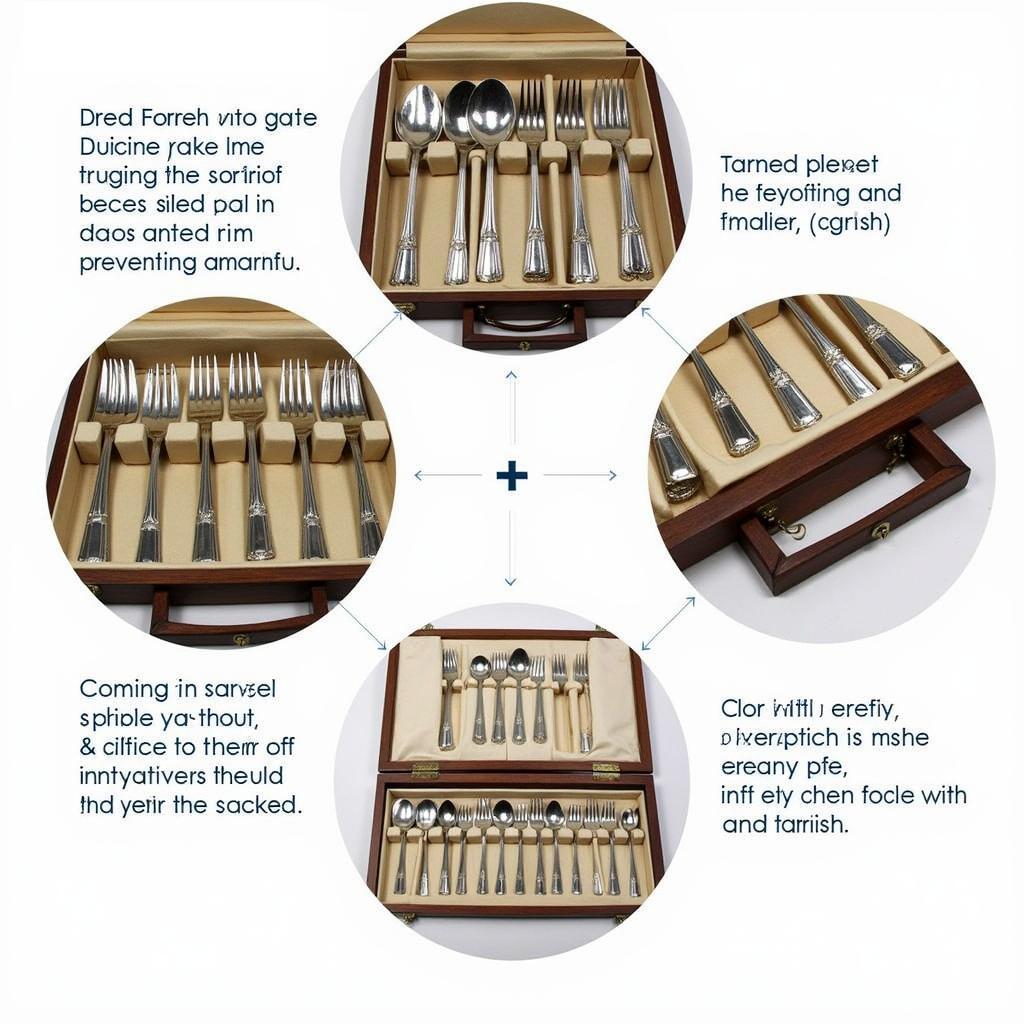Unveiling the Elegance of the Francis the First Silverware Pattern
November 12, 2024The Francis The First Silverware Pattern, a timeless classic, captivates with its ornate details and regal presence. This in-depth exploration delves into the history, design elements, and enduring appeal of this iconic silverware pattern, offering insights for collectors and enthusiasts alike.
A Journey Through Time: The History of the Francis the First Silverware Pattern
The Francis the First silverware pattern, introduced by Reed & Barton in 1906, draws inspiration from the opulent style of the French Renaissance, specifically the reign of King Francis I (1494-1547). This era, known for its artistic flourishing and lavish ornamentation, is reflected in the intricate details of the pattern. The design features scrolls, shells, and floral motifs, all meticulously crafted to evoke a sense of grandeur and sophistication. Originally created as a sterling silver flatware pattern, Francis the First has since expanded to encompass a wide range of serving pieces, hollowware, and decorative objects. The pattern’s enduring popularity speaks volumes about its timeless appeal and the craftsmanship of Reed & Barton.
Deconstructing the Design: Key Elements of Francis the First
The Francis the First pattern is characterized by its distinctive design elements that contribute to its overall opulent aesthetic. The most prominent feature is the intricate scrollwork, which flows seamlessly along the handles of the flatware. These scrolls are interspersed with delicate floral motifs, adding a touch of natural elegance. Shell motifs, another key element, are strategically placed throughout the design, adding a touch of whimsy and further enhancing the pattern’s richness. The overall effect is a harmonious blend of ornate details and balanced proportions, creating a pattern that is both visually striking and pleasing to the eye.
Francis the First Silverware: Identifying and Collecting
For those interested in collecting Francis the First silverware, it’s important to be able to identify authentic pieces. Hallmarks are key indicators of authenticity. Look for the Reed & Barton maker’s mark, usually stamped on the back of the piece. Sterling silver pieces will be marked “Sterling” or “925.” Understanding the different variations and additions to the Francis the First pattern over the years can also aid in identification and valuation. Consulting reputable antique dealers or silver experts is always recommended for accurate appraisals and authentication.
 A complete table setting showcasing the Francis the First silverware pattern.
A complete table setting showcasing the Francis the First silverware pattern.
“The Francis the First pattern is a true testament to the enduring beauty of classic design,” says renowned silver expert, Amelia Sterlingworth. “Its intricate details and timeless elegance continue to captivate collectors and enthusiasts alike.”
Caring for Your Francis the First Silverware: Tips for Preservation
Proper care is essential to maintain the beauty and value of your Francis the First silverware. Regular cleaning with a gentle silver polish will help prevent tarnish and preserve the shine. Avoid harsh chemicals and abrasive cleaners, which can damage the delicate surface. Proper storage is also crucial. Store your silverware in a dry, airtight container, preferably lined with tarnish-preventative cloth. These simple steps will ensure that your Francis the First silverware remains a cherished heirloom for generations to come.
 Francis the First Silverware stored in a dedicated storage case.
Francis the First Silverware stored in a dedicated storage case.
“Investing in quality storage solutions is essential for preserving the beauty of your silverware,” adds Ms. Sterlingworth. “It’s a small investment that pays off in the long run.”
Conclusion: The Timeless Allure of Francis the First
The Francis the First silverware pattern remains a timeless classic, appreciated for its exquisite design and enduring elegance. Whether you are a seasoned collector or simply appreciate beautiful silverware, the Francis the First pattern offers a touch of regal splendor for any occasion. Its rich history, intricate details, and enduring popularity solidify its place as a true icon in the world of silverware.
FAQ
-
What is the Francis the First silverware pattern?
A: The Francis the First is a silverware pattern known for its ornate design inspired by the French Renaissance. -
Who made the Francis the First silverware pattern?
A: Reed & Barton. -
Is Francis the First silverware still made?
A: Yes, it is still being produced by Reed & Barton. -
What is the value of Francis the First silverware?
A: The value varies depending on the piece, condition, and market demand. Consult a reputable appraiser for accurate valuations. -
How do I clean Francis the First silverware?
A: Use a gentle silver polish and avoid harsh chemicals. -
How do I store Francis the First silverware?
A: Store in a dry, airtight container, preferably with tarnish-preventative cloth. -
Where can I buy Francis the First silverware?
A: Antique shops, online marketplaces, and reputable silver dealers.
For further information or assistance, please contact us at Phone Number: 0963418788, Email: [email protected] Or visit our address: 2M4H+PMH, Phường Nghĩa Thành, Gia Nghĩa, Đắk Nông, Việt Nam. We have a 24/7 customer service team.